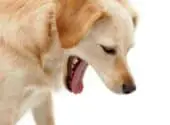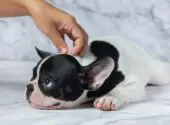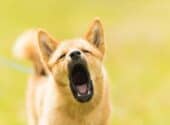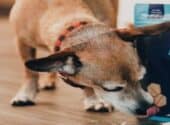Picture this: your furry pal emptied his dinner plate enthusiastically, but the water bowl remained untouched. That should leave you scratching your head!
We’re sure you also asked yourself, “why my dog refuses to hydrate himself but happily chomp down on his meals?“
In the following sections, we’ll quench your curiosity, answer all your questions, and provide tips to encourage your dog to drink as much water as needed. Ready? Let’s dive right in!
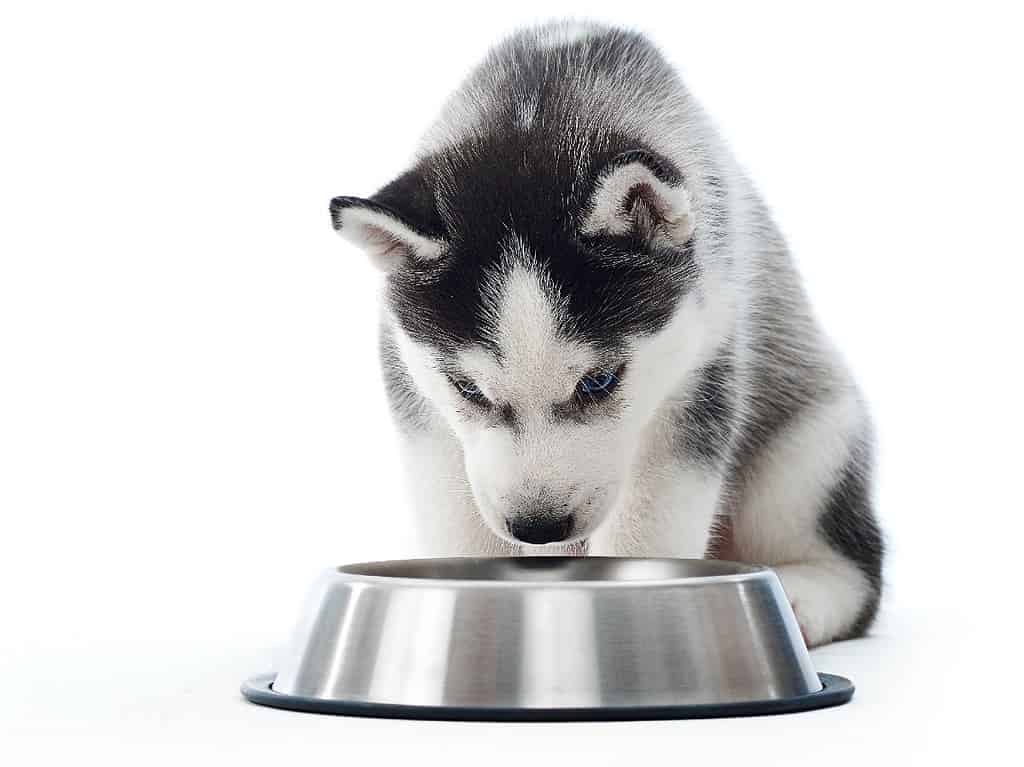
Why Dogs Should Drink Water And Not Just Eat
The lack of access to water can have serious consequences for any living organism, and dogs are no different. Water assists in thermoregulation, as canine physiology does not provide them with efficient ways to cool down their body temperature other than panting. Drinking water also serves as a primary source of hydration for dogs, making up much more than they obtain from food alone.
To effectively manage bodily functions, dogs require adequate hydration. Water facilitates digestion by adapting the food within their diet and maximizing absorption capabilities throughout the body. Insufficient hydration leads to lumpy, dry, and hard dog poop. Absorbing beneficial nutrients from their food becomes possible with water, allowing for proper transportation throughout their bodies. In this way, dogs can adequately gain valuable nutritional substances from their sustenance.
Moreover, through peeing and perspiration, water expels toxins and other waste products into its system. This hydration level sustains kidney function, thus prohibiting kidney stone formation and decreasing the possibility of urinary tract infections. Furthermore, water provides lubrication to joints, offering cushion and permitting flexibility; this is vital for active and older pups.
Water is also integral to maintaining healthy skin and coats in dogs. Hydrated skin remains supple and moisturized, avoiding dryness or irritation. Additionally, when adequately hydrated, one may observe a sleek coat and a decreased risk of developing skin disorders. Water consumption is also paramount to sustaining eye health by promoting proper tear production while protecting from dry eyes.
Signs That A Dog Is Dehydrated
Dehydration poses a considerable risk to dogs, similar to its effects on humans. It occurs when a dog’s body experiences limited fluid intake compared to the amount it has lost, leading to an unequal balance between its hydration levels. Recognizing the signs and symptoms of dehydration in dogs is essential for prompt remedy and adequate treatment.
To evaluate the hydration level of a dog, one should inspect its gums. Under ideal circumstances, they should be damp; if dehydrated, they may become sticky and dry. The eyes may appear sunken as well.
Another good indicator of a dog’s adequate hydration levels. If the dog is adequately hydrated, gently pinching its skin should result in it retracting back into place almost instantly; however, impaired skin elasticity that takes longer or does not retract completely indicates dehydration.
Symptoms of dehydration in dogs can vary greatly but include accelerated respiration, lethargy, appetite loss, and a dry nose. Timely medical care is essential to minimize the consequences as soon as signs become evident; therefore, it should be sought immediately.
Reasons Why My Dog Is Not Drinking Water But Is Eating
There can be several reasons why your dog is not drinking water but is still eating.
My Dog Is Not Drinking Water But Is Eating Due To Medical Illness or Discomfort
When a dog ceases to drink water but continues to eat proper amounts of food, this could indicate underlying medical issues or discomfort. Urinary tract infections (UTIs) or bladder stones may cause inflammation when urinating, causing the dog to try and lessen its water intake to reduce the frequency of urinating.
In some cases, medical conditions such as renal failure or diabetes can also result in dehydration due to a lack of desire for fluid intake among the pet;. However, they may still feel hungry and will consume their meals; there appears not to be an inclination towards hydration.
Change in Routine or Environment
Alterations in routine or environment can be a major contributing factor when a canine’s behavior changes, including reducing water intake despite continuous food consumption. Canines are creatures that value habit and require regularity and familiarity to thrive. Any shifts in their everyday activities or surroundings could interrupt their routines and consequently influence their hydration habits.
That’s right; dogs expect certain activities – including when they can access drinking water and where it may be located. Therefore, an alteration in the meal times or playtime could result in anxiety for the animal, resulting in them not engaging with their usual drinking pattern as they would otherwise. To illustrate this point, if the dog’s food bowl is moved or a different water bowl is used, both scenarios might negatively affect their hydration levels.
Water Quality
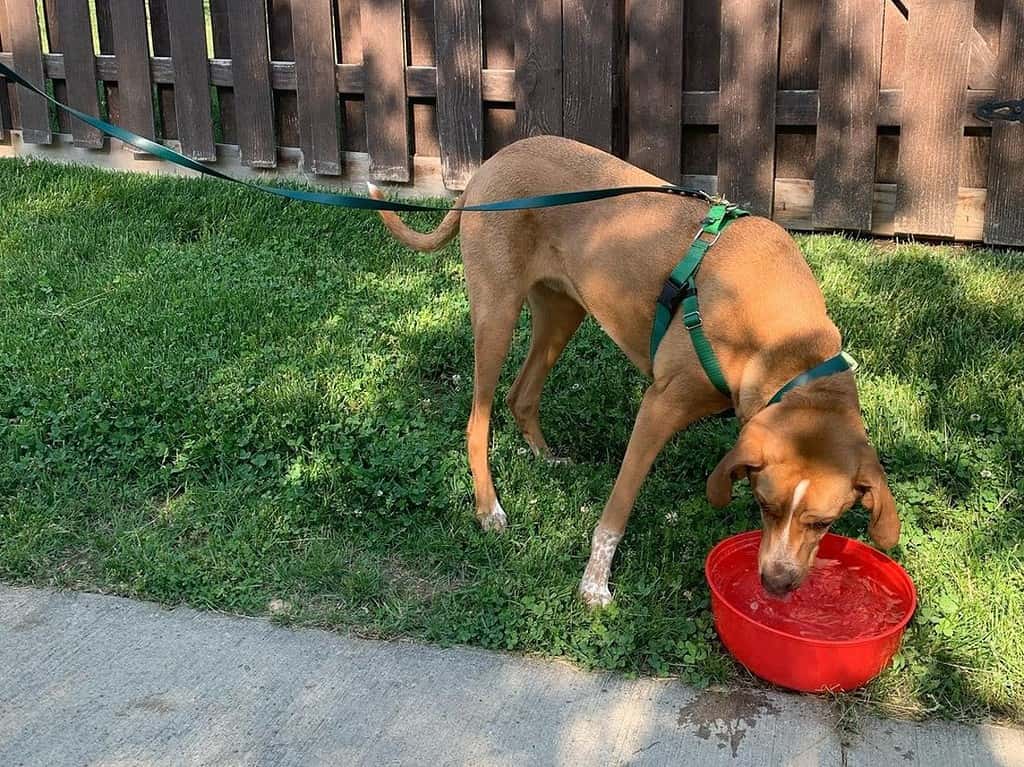
When a dog does not drink water but keeps eating, numerous issues in relation to the quality of the water may be present. With a heightened sense of taste and smell compared to humans, dogs can recognize any impurities or contaminants in the liquid that render it unfavorable or hazardous. For example, significant concentrations of chlorine, heavy metals, or other pollutants can create an unpleasant aroma and flavor, preventing them from drinking.
Remember that unmoving or unclean may be a breeding ground for bacteria, weeds, or parasites that can potentially threaten the dog’s health.
Ultimately, dogs prefer cool and refreshing water over warm and stagnant water.
Preference for Moisture from Food
Dogs prefer moist foods such as canned wet dog food and slices of melon or cucumber, which consequently supplies them with a sizable portion of their daily water intake. This preference for moisture-rich foods can negatively impact the dog’s consumption of plain water and further entice their preference for meals over drinking. The flavor and consistency of moist foods play an important role in their overall appeal to dogs.
But here’s the deal: While dogs may derive some moisture from food, this is insufficient for sustaining their overall hydration levels. Water is essential for maintaining their health and bodily functions; therefore, providing them access to clean and fresh water at all times should be a priority, even if they prefer getting most of their hydration from food.
My Dog Is Not Drinking Water But Is Eating Due To Old Age
As dogs age, their bodies experience various physiological and cognitive changes that can affect their behaviors and preferences. These include decreased thirst sensation. When a dog reaches old age, its body functions become less effective in regulating hydration levels resulting in decreased thirst with no desire to drink water.
Similarly, older dogs may suffer from decreased physical movement, hindering their water access. If the location of the water bowl that they move up or down stairs or is situated in an inaccessible spot, then these dogs are likely to avoid sufficiently hydrating themselves.
Lack of Exercise
Inadequate physical activity is a major contributor to why an otherwise healthy dog may have reduced water consumption. Like humans, dogs need regular exercise to remain healthy and hydrate appropriately. When a dog does not engage in sufficient physical activity, it won’t feel thirst and exhaustion, resulting in minimal water consumption despite having satisfactory nutrition.
In other words, exercise causes a heightened metabolic rate in a dog, which increases fluid loss through sweating and panting. This prompts the dog to acquire sufficient hydration; without it, a dog will have a decreased urge to drink water, even if eating solid foods at regular intervals.
Exercise requirements for canines can be divided into two primary categories: aerobic exercise and mental stimulation. Aerobic workouts stimulate the dog’s heart rate and enhance stamina through movements such as walking quickly, jogging, running, fetching games, or swimming. The length and intensity of aerobic exercises should reflect the breed type and age of the individual dog. For example, higher-energy breeds like Huskies and Bully Kuttas should receive more intense levels of physical activity than their lower-energy counterparts.
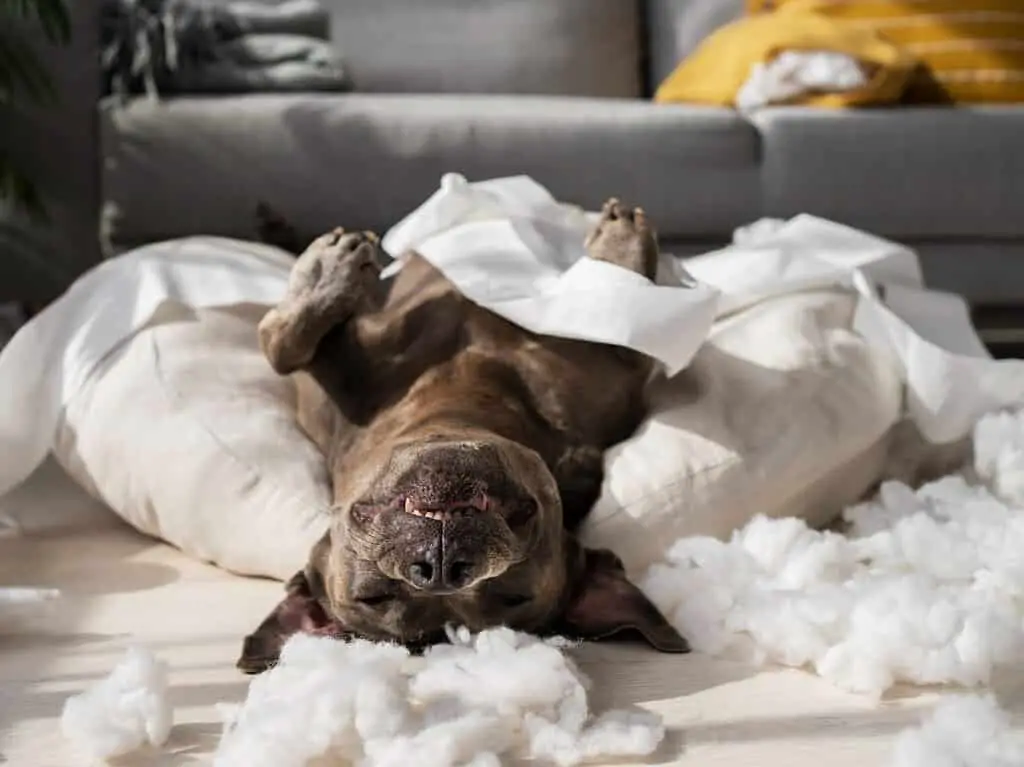
Similarly, dogs require stimulation to stay mentally active and prevent boredom-induced problematic behaviors, such as licking the floor constantly, screaming, and chewing pieces of furniture. Providing them with activities such as puzzles, obedience training, agility exercises, or interactive play can foster learning capabilities and allow a healthy outlet for energy expenditure.
Read also: Why Is My Dog Acting Weird?
The exercise regime for dogs is proportional to their age. Young puppies should not engage in high-intensity physical activities or intense endurance sessions as this can damage their developing skeletal and joint structure. As an alternative, short, interactive playtime or moderate walks are enough for puppies until such a time when their endurance can handle increased levels of exercise.
Tips To Encourage Dogs To Drink Water
If you struggle to convince your canine companion to drink more water, numerous strategies are worth exploring.
Firstly, ensure that fresh, clean water is easily available for your dog around the clock. Dogs tend to be more inclined to drink water if it can be quickly accessed and their water bowl regularly replenished. To maximize effectiveness, placing several water bowls in various parts of your home may be beneficial, specifically if your pet likes to roam around your house all day.
Add a low-sodium chicken or beef broth to the liquid to make drinking water more inviting for your dog. For an even more enjoyable treat, freeze small portions of the flavored broth in ice cube form and place them inside your pet’s water bowl.
Thirdly, pay attention to the temperature of the water provided. Though generally suitable temperatures should be lukewarm or slightly cool, certain dogs may have specific preferences for their water. To provide an optimal drinking experience, one can invest in a pet water fountain that mimics a natural water source and provides freshness and stimulation that could encourage your dog’s interest in drinking.
Another helpful tip is to replace your dog’s dry kibble with wet food; this type of food contains higher moisture levels, which can increase their hydration. However, we recommend you speak to your vet before drastically changing your dog’s diet.

